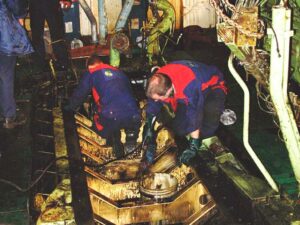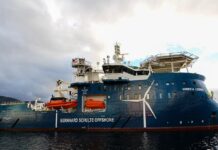Vessels with higher-speed engines have an increased claims frequency, a study finds
The following is partly a text of a news release from The Swedish Club:
The Swedish Club warns that vessel operators should always look to the long term, when specifying the type of engines to be installed across the fleet. Latest statistics from the club show that vessels propelled by medium/high speed engines have a claims frequency 2.5 times higher than slow-speed engines, with an average claims cost of close to $650,000.

„Main Engine Damage,“ the latest loss prevention report from The Swedish Club, sheds light on an expensive category of damage that is all too frequent. Statistically a vessel will suffer between one and two incidences of main engine damage during its life time. Considering the costly consequences for ship owners and their hull insurers, it is important to identify the main causes of this damage and examine how these can be prevented.
The publication also includes loss prevention advice from the major engine manufacturers, MAN Engines and Wartsila.
Peter Stalberg, senior technical adviser, said, “Our investigation shows that bulkers and tankers are the best performers for claims cost in comparison with club entry. Most of these vessels have slow-speed engines. Conversely, passenger vessels/ferries have the highest frequency of main engine claims – 0.066 claims per vessel and year. Often these vessels have multiple medium-speed engine installations. The same is also true for ro-ro vessels.
“When there is a choice to be made between a slow-speed engine and a medium/high speed engine, the club’s experience demonstrates that the slow-speed engine is the safer option, when you balance the space-saving advantages of the medium/high speed engine against the increased costs of running the vessel in its lifetime. In addition, not only is the claims frequency of medium/high speed engines higher, but they also have a disproportionate claims cost (43 percent) in relation to insured vessels (28 percent).”
Lubrication failure is still the most expensive and frequent cause of damage, followed by incorrect maintenance and/or repairs.
The report shows that during the current study (2015 – 2017):
* 40 casualties caused by lubrication failures with average cost of US $ 763,320
* 19 casualties caused by incorrect maintenance/repairs with average cost of US $ 544,167
* 11 casualties caused by a poor fuel management with average cost of US $ 344,069
Wrong engine lubrication is a costly business.



